Why Is My dog’s Shock Collar Not Working? – Step-by-step Solutions
Let’s talk about dog shock collars. They can be a big help in training your furry friend, but when they stop working, it’s a problem. Why Is My dog’s Shock Collar Not Working? Sometimes interrupt a routine training session, transforming it in a challenging game for both pets and owners.
A broken shock collar can mess up your dog’s behavior and could even put them at risk. In this article, we’ll break down everything you need to know about shock collars—what they do, why they sometimes fail, and how to fix them. So, if you’re scratching your head over a stubborn shock collar, stick with us – we’ve got your back.
What is a Dog’s Shock Collar?
Ever heard of a dog’s shock collar? Imagine you’re holding a remote control. You spot your dog jumping on a visitor (a big no-no!) and press a button on your remote. This sends a tiny buzz to the collar around your dog’s neck.
The purpose of these collars is typically to train dogs, especially in terms of curbing unwanted behaviors or reinforcing obedience commands. It’s not meant to hurt, just to surprise them a bit. The idea is that our dogs start to think “Hmm, maybe jumping on visitors isn’t such a good idea after all.”
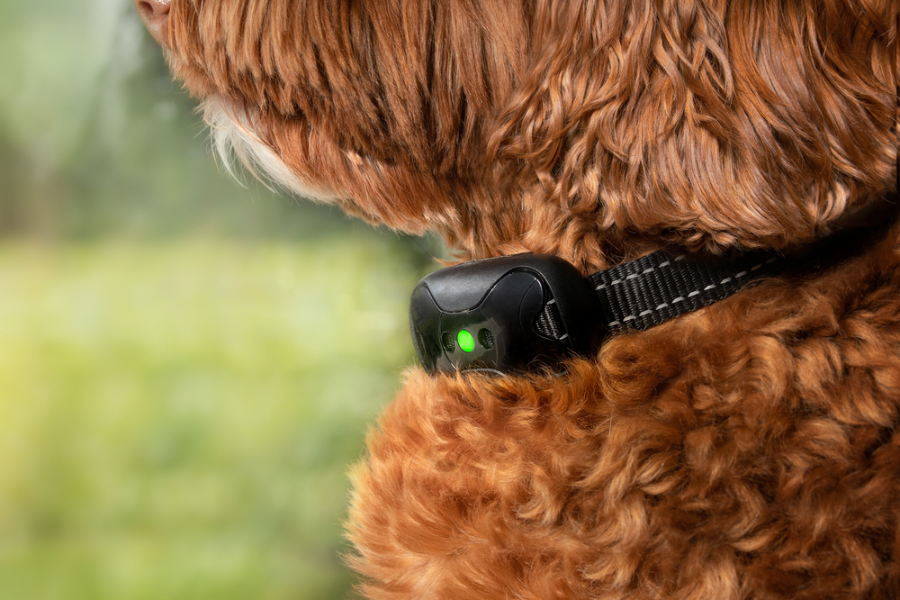
How Do Shock Collars Work?
So, how does a shock collar work? The collar consists of two main parts: a handheld remote control for the trainer or owner, and a receiver that is attached to the dog’s collar. When the remote is activated, the receiver delivers a short, low-level electrical pulse, or shock, to the dog. The intensity of this shock can usually be adjusted to various levels, depending on the size and sensitivity of the dog as well as the training needs.
The collar has two little prongs that sit on your dog’s neck. When you press the button, it completes a circuit and gives off a buzz. It’s crucial to start with the lightest buzz and only turn it up if needed. Remember, we’re not trying to scare our dogs; just guide them.
It sounds simple, but it’s important to get it right. Supporters of shock collars say that, when used properly, they may be an efficient teaching tool that can efficiently and securely address undesirable behavior. However, shock collars have been criticized on claims that they may inflict physical discomfort on dogs, make them anxious and stressed out, and even make them hostile towards their owners.
Why Is My dog’s Shock Collar Not Working?
We’ve all been there. Our dog’s shock collar just won’t work right. This is a big deal because shock collars help train our dogs. Let’s dive in and figure out what’s going wrong.
Common Issues:
Battery Issues
Shock collar battery issues are the most common kind of malfunction. The batteries in the collar or remote might be dead, weak, or improperly installed.
Range Issues
Basic models offer a range of about 100 to 500 yards. Each collar has a specified maximum distance it can cover, beyond which it won’t function.
Damage or Wear
Regular wear and tear, or specific damage to the collar (like frayed wires, broken prongs, or exposure to water) can affect its functionality.
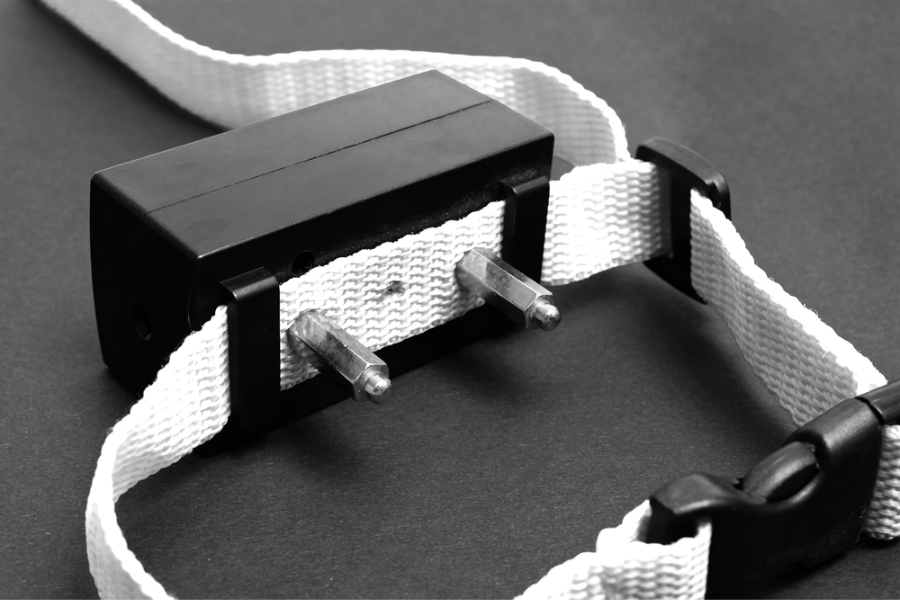
Less Common Issues:
Faulty Components
Manufacturing faults or internal component failures may occur, although they are not as often as concerns like battery or fitment difficulties.
Desensitization
Though it’s unusual, it is possible for a dog to develop an immunity to the shocks delivered by a shock collar if it’s used too often or incorrectly.
Signal Interference
Electronic interference from other devices can sometimes disrupt the signal between the collar’s remote and the receiver, though this is less common.
How Do You Troubleshoot a Shock Collar?
For all dog owners, it’s essential to understand how to troubleshoot a dog’s shock collar. Knowing how to identify and rectify common problems can ensure the collar’s effectiveness and your pet’s safety.
Step-by-Step Troubleshooting Guide
- Check the Battery: Begin by ensuring that the batteries in both the collar and the remote control are fully charged and properly installed. Weak or dead batteries are the most common cause of shock collar malfunctions.
- Examine the Fit: The collar should fit snugly, allowing two fingers to slip between the collar and your dog’s neck. Ensure the contact points are touching the dog’s skin. If the collar is too loose, it may not deliver the stimulation effectively.
- Inspect for Damage: Look over the collar for any signs of wear and tear. Check for damaged wires, broken prongs, or signs of corrosion in the battery compartment. Water damage is also a common issue, especially if your dog swims with the collar on.
- Test the Collar: Many shock collars come with a test light or a test mode. Use this feature to ensure the collar is emitting stimulation. If your collar doesn’t have a test mode, you can place the collar in your hand and feel for stimulation.
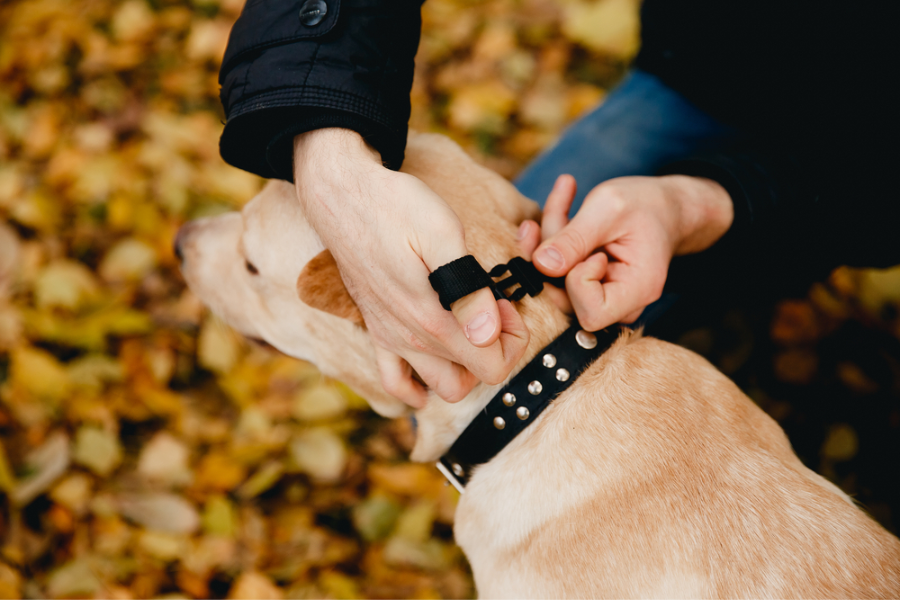
How Do You Reset an Electric Dog Collar?
Resetting a shock collar can help resolve many technical glitches.
First, you need to find the reset button on the collar. This is usually a small, recessed button that might be labeled as “reset.” In some models, the reset function might be integrated into another button, like the on/off switch.
Gently press and hold the reset button for a few seconds. The time you need to hold the button can vary, but it’s typically around 5 to 10 seconds. Most collars will give a physical or auditory signal, like a beep or a light flash, to indicate that the collar has been reset.
Resetting a collar essentially restores it to its original factory settings. This can be particularly useful if you’ve accidentally changed a setting or if the collar isn’t responding as expected. Again, always refer to your product’s user manual for specific instructions.
How Broken Collars Hurt Dogs
If a collar is on the fritz, it can scare or hurt your dog. Shock collars, when broken or misused, can potentially harm dogs in several ways, random or too-strong shocks can cause pain. Here are some ways in which broken or improperly used shock collars can hurt dogs:
- Excessive Intensity: If a collar is damaged, it might send shocks at a greater intensity than was originally designed. This might cause pain or discomfort to the dog, leading to fear, anxiety, and possibly aggressive behaviour.
- Psychological Trauma: Incorrect or overuse of shock collars can lead to fearfulness, anxiety, and distrust towards their owners
- Skin Damage: A malfunctioning collar may fail to deactivate or activate too often, resulting in inappropriate skin contact. If the collar is overly tight or worn for too long without breaks, it might cause burns, pimples, or discomfort.
How Long Do Shock Collar Batteries Last?
We all want to keep our dog’s shock collar working well. To do this, we need to know about the batteries. How long they last and when and how to replace them are important things to know.
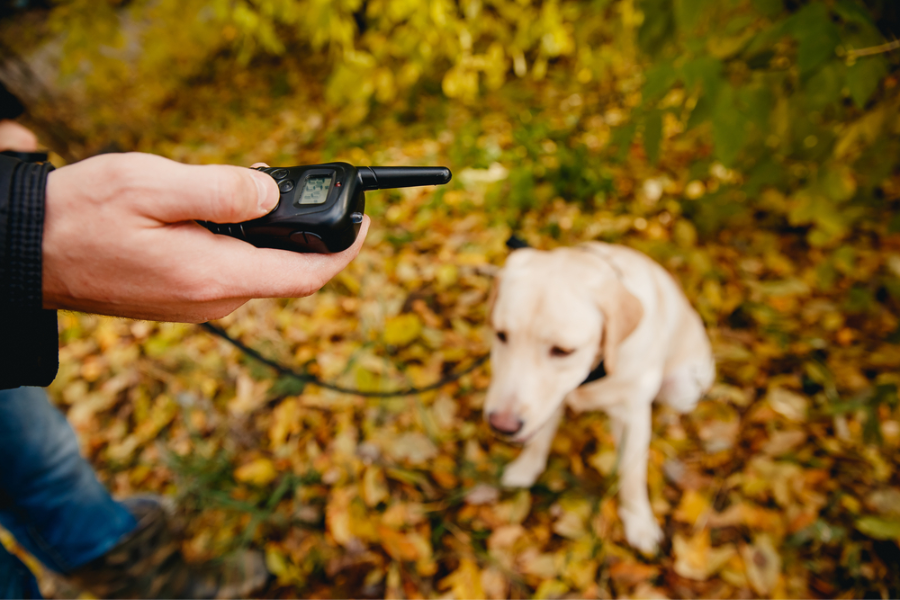
Average Lifespan of Shock Collar Batteries
Shock collar batteries can last from one week to several months. But, a lot of things can change this. The kind of battery, how much you use the collar, and even the weather can make a difference.
There are two types of batteries. Some collars have batteries you charge up and use again. These can last for a few months. Others have batteries you use once and then throw away. These don’t last as long.
If you use the shock collar a lot, the battery will run out sooner. Also, if it’s cold, the battery won’t last as long.
Replacing Shock Collar Batteries: When and How?
It’s important to know when the battery is running out. If the collar doesn’t work as well, or if it stops working, you might need a new battery.
Here’s how to change the battery:
- Take the collar off your dog and turn it off.
- Find where the battery goes. It’s usually on the back of the collar.
- Open up the battery area. You might need a tool for this.
- Take out the old battery and throw it away properly.
- Put in the new battery. Make sure it’s the right way round.
- Close up the battery area and turn on the collar. Check it’s working.
Always use the right kind of battery. If you use the wrong one, it might break the collar.
To sum up, knowing about your shock collar’s batteries can help keep it working well. Check the batteries often and change them when needed. This will help you train your dog in the best way.
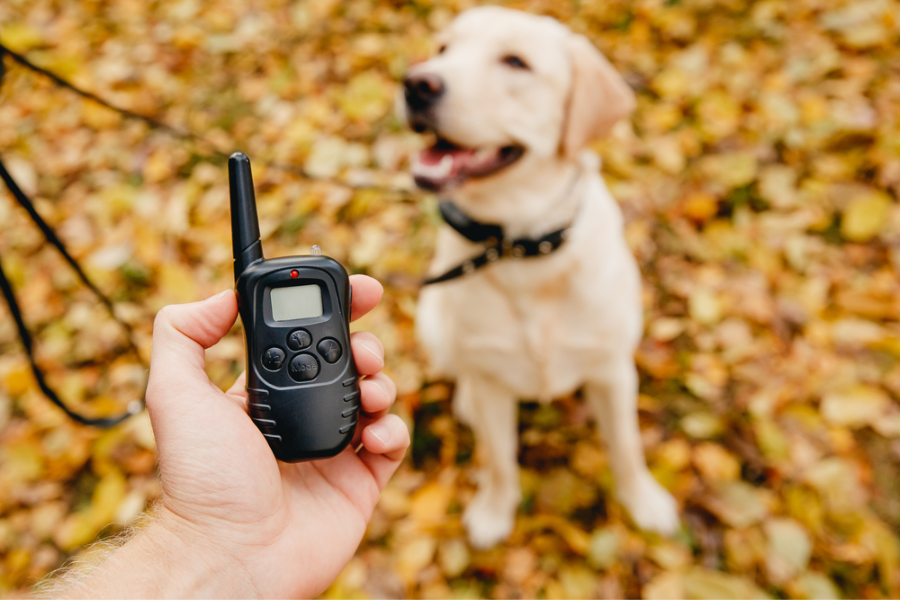
Why Is Everyone So Against Electric Collars?
The controversy surrounding electric (shock) collars in dog training stems from concerns about their safety, effectiveness, and ethical implications.
Electric collars can cause significant stress and anxiety in dogs. The fear and pain induced by shocks can lead to behavioral issues, including increased aggression, fearfulness, and anxiety. Moreover, incorrect use of electric collars can lead to physical injury. This includes burns, skin irritation, and, in some cases, more severe injuries due to excessive or prolonged shocks.
Some users believe the use of aversive training methods like shock collars can damage the trust and bond between a dog and its owner. Many argue that it’s unethical to use pain to train animals when there are other effective, pain-free methods available.
There is controversial talk on Reddit about an individual who appears to have a positive view of electric (e-) collars and believes in their effectiveness when used correctly.
His approach is to use the vibrate and tone settings on the e-collar, reserving the shock setting for less frequent use. Rather than using the e-collar as a direct response to disobedience, he uses it to gain the dog’s attention before issuing a command. After getting the dog’s attention with the collar, he follows up with positive reinforcement, such as treats, toys, or praise.
He mentions having tested the shock levels on themselves, noting that it doesn’t hurt or leave marks, which suggests a concern for the dog’s physical well-being and a desire to ensure the stimulus is not painful.
In conclusion, this individual believes that electronic collars, when used carefully and in combination with positive reinforcement, may be an effective teaching tool. He pays close attention to their dog’s emotional and physical reaction to the collar and stresses the necessity of using it to draw attention rather than as a punitive tool.
Conclusion
In this article, we’ve delved into the world of dog shock collars, exploring their functionality and mechanics. We’ve addressed common issues that may hinder their operation and discussed the potential impact on your dog’s well-being.
Step-by-step guidance was provided on troubleshooting and repairing a shock collar, along with insights on when to seek professional assistance. We’ve also guided you through the process of resetting the collar and offered maintenance tips to ensure its longevity and effectiveness.
Remember, while dog shock collars can be valuable training aids, their effectiveness hinges on responsible and informed usage. Understanding their operation and maintenance is crucial. Armed with this knowledge, you and your dog can safely and effectively utilize these training tools to their fullest potential.

